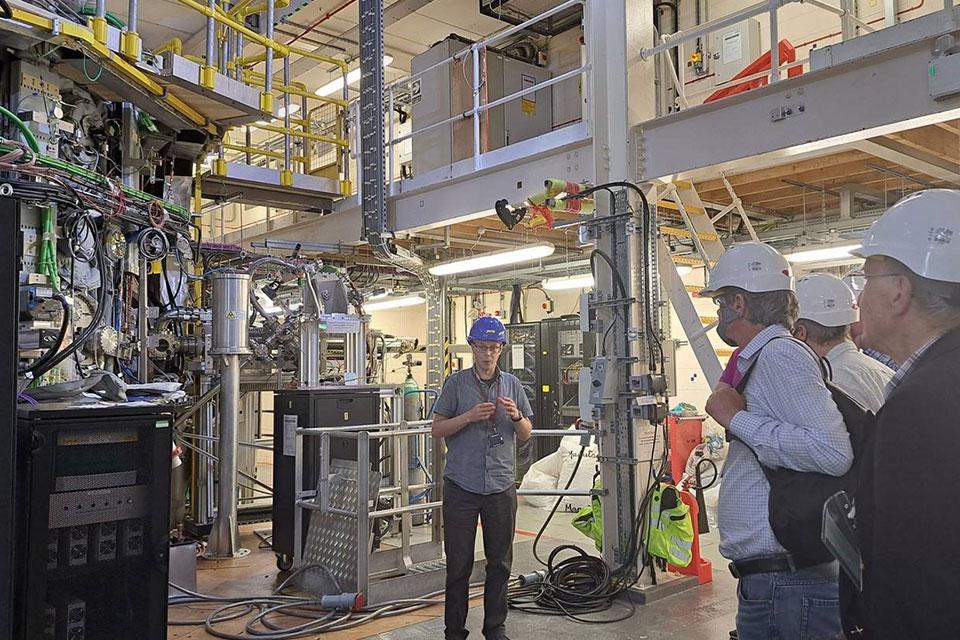Members of the Henry Moseley Circle are invited to annual events as a token of our appreciation for their generosity. The latest event was a behind-the-scenes trip to the Culham Centre for Fusion Energy, the UK Atomic Energy Authority’s national fusion laboratory in Oxfordshire. Alumnus Alan Fox was one of the VIPs on the visit…
A small group of us were given an insight into the latest developments in UK fusion during a trip to the UKAE site at Culham. On the hottest day of the year so far, the air-conditioned interiors were most welcome. I had seen their main reactor the Joint European Torus (JET) a few years ago, and this time we were shown the Mega Ampere Spherical Tokamak (MAST). This is their latest exploratory reactor designed to develop technologies required in any future commercial designs and it is a spherical tokomak as opposed to JET’s torus shape. Duly fitted with hardhats we gazed at the impressive 20-foot high complex of cables and pipework – no-one had the nerve to ask “how does it work?”! See https://ccfe.ukaea.uk/research/mast-upgrade/
Sophisticated robots
Nearby is a series of labs relating to remote handling, RACE (Remote Applications in Challenging Environments). This where they are developing sophisticated robot arms that will be needed for maintenance inside the reactors and once again, it is the software controlling the arms that is the main focus. For us, something like looking at a cup and deciding how to pick it up is entirely intuitive but it is less straightforward for a computer control program…
The complex has increased its staffing considerably over the past few years, and now has its own apprentice training school for engineers with a cohort of 70 or so. They are sponsored by industry, and spend time at Culham as well as in the commercial world. The foundation course units include milling and lathe work – presumably as it is no longer taught in schools!
Fusion at Oxford
After an impressive lunch, we finished with a talk by our own Professor Michael Barnes who explained some of the detailed areas his group were investigating, primarily modelling ways to control instabilities in the plasma. After a morning seeing highly complex sophisticated hardware, we were now presented with graph plots of higher mathematics and complex formulae… There is a long-standing joke about viable fusion energy being ten years away (and always will be) and it is easy to see why.
ITER (International Thermonuclear Experimental Reactor) in France is the next big development, but that will not come into operation for 3 or 4 years and JET will continue as a testbed until then. The physics of containment, and the extreme energies required are clearly a major challenge but I was surprised to hear one opinion that, given enough funding, they could all be overcome quite rapidly.
Funding fusion
The staff showing us around were full of enthusiasm and pleased to answer our questions. They were keen to express how much is done ‘in collaboration’ with industry. It is not clear if that helps with the funding... This site is run by the UK Atomic Energy Authority so would appear not to rely on EU funding, though once development moves to ITER , it is difficult to say what the effect will be on Culham.
Huge thanks to Val Crowder and her team for organising the trip. It was an ambitious itinerary, so time pressure limited the opportunity to explore each area in detail, but we gained an excellent overview of the current status of research.

